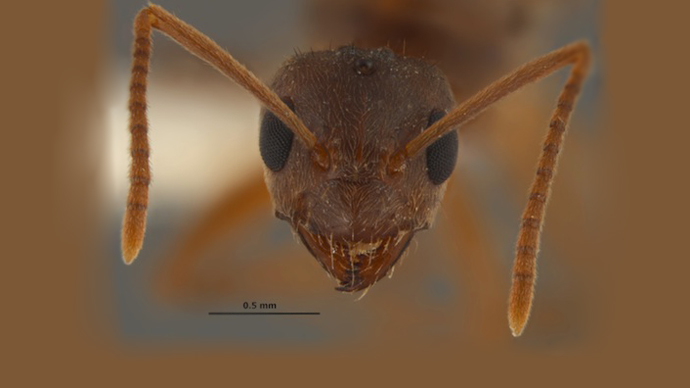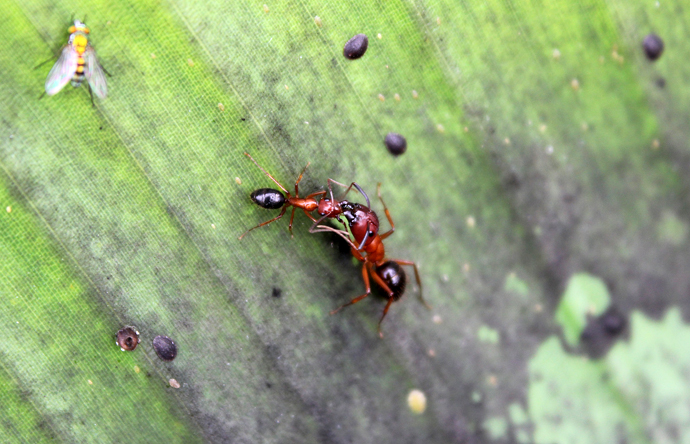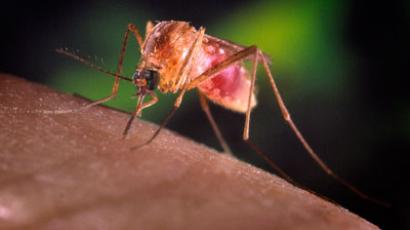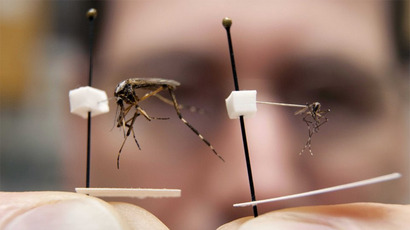'Crazy' ants that can't be killed with insecticides invade the US

Invasive 'crazy ants' are chewing up electronics in the southeast US, and researchers believe the tiny insects have caused $146.5 million in damage to iPhones, laptops, DVR cables, and other gadgets in just one year in the state of Texas.
The crazy ants are attracted to electrical wiring, and their electrocuted carcasses are often found scattered around power outlets, transformers and switches. This invasive species from Brazil and Argentina is immune to chemicals that kill off other types of insects, such as the common red ant, and residents with an infestation may need to call pest control to rid their homes of them.
The tawny crazy ant, formerly known as the raspberry crazy ant, was first discovered in Houston in 2002, and now exists in several counties in Texas, Florida, Mississippi and Louisiana. This species is called “crazy” because the trail it leaves behind is so irregular and erratic.
In a one-year period, these ants destroyed $146.5 million worth of electronics and wiring in the state of Texas, researchers from Texas A&M University told ABC News. But even if the ants fail to chew up the products, their carcasses can cause just as much destruction. Researchers found that when the ants are electrocuted, they wave their abdomens in the air, omitting a particular scent that attracts other ants. As each of the ants dies off, the bodies build up in electric switches or devices, causing switches to get stuck or the system to short-circuit.
The ants frequently also build bridges in electrical systems, such as air conditioners. The soil and moisture can also cause these systems to short-circuit and require expensive repairs.
But Ed LeBrun, co-author of the university’s research, told ABC
that the biggest problem is their elimination of the common red
ant. Researchers are still unclear why the red ants are
disappearing, but they believe that competition for resources
between the two species plays a major part.

“Perhaps the biggest deal is the displacement of the fire ant,” he said. “The whole ecosystem has changed around fire ants. Things that can’t tolerate fire ants are gone. Many that can have flourished.”
LeBrun found that in two areas his team studies, red ants had completely disappeared. Researchers blame the invasion on travelers who brought the new species to the US in their suitcases after visiting Argentina or Brazil. And in many cases, residents whose electronics are being chewed up by the crazy ants would rather have the fire ants in their backyards.
“When you talk to folks who live in the invaded areas, they tell you they want their fire ants back,” LeBrun said in a UT video. “Fire ants are in many ways very polite. They live in your yard. They form mounds and stay there, and they only interact with you if you step on their mound.”
The crazy ant advances about 650 feet (200 meters) per year on its own, but can spread rapidly if travelers transport the species in their luggage. The ants have been spotted in 21 counties in Texas, 20 counties in Florida, and several locations in Mississippi and Louisiana, and researchers are calling on Americans to double-check their suitcases if they have visited any regions where the insects reside.














